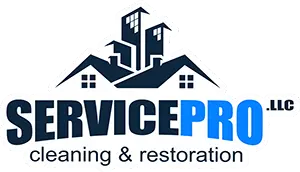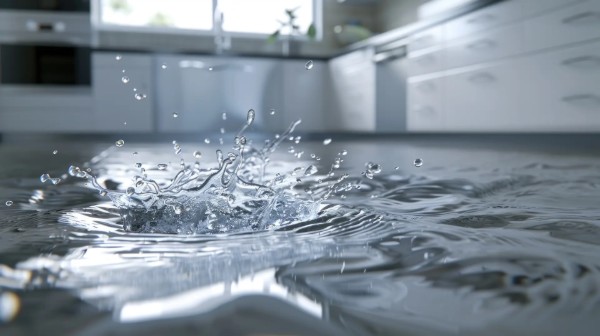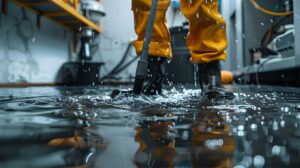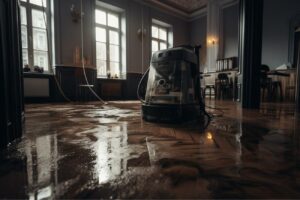It’s often said that swift action is the key to effective water extraction, but how true is that in practice? When you encounter a flood or leak, every moment counts, and understanding the right steps can make all the difference. From evaluating the damage to selecting the appropriate equipment, each phase requires careful consideration. What comes next is vital for ensuring thorough drying and preventing mold growth—so let’s explore the essential tips you need to know.
Key Takeaways
- Assess the extent of water damage to select appropriate extraction equipment and methods tailored to the situation.
- Prioritize safety by wearing protective gear such as gloves and masks during the extraction process.
- Combine vacuum extraction with pump removal for efficient water removal, ensuring equipment is positioned correctly.
- Maintain a well-ventilated space to promote airflow and reduce moisture buildup during and after extraction.
- Regularly monitor moisture levels with a hygrometer to ensure effective drying and prevent future mold growth.
Assessing the Water Damage Situation
When you face water damage, the first step is to assess the situation thoroughly.
Begin with an initial inspection of the affected area, looking for visible signs of moisture, such as damp walls, ceilings, and flooring. Identify the source of water intrusion—whether it’s a burst pipe, flood, or appliance failure.
Once you’ve pinpointed the source, conduct a damage evaluation to determine the extent of the impact. Check for structural damage, mold growth, or compromised materials that may require special attention.
Don’t forget to examine adjacent rooms, as water can migrate beyond the immediate area. Document your findings with photos and notes, as this information will be essential for insurance claims and future repairs.
Choosing the Right Equipment for Extraction
How do you choose the right equipment for effective water extraction? Start by evaluating the scale of the water damage. Select extraction pumps based on performance specs and the nature of the water (clean, gray, or black). Remember, maintaining your equipment is vital; regular checks can prevent breakdowns during critical moments.
| Equipment Type | Key Features | Recommended Use |
|---|---|---|
| Submersible Pumps | High capacity, portable | Flooded basements |
| Truck-mounted Pumps | Powerful, large-scale removal | Extensive water damage |
| Vacuum Extractors | Versatile, easy to maneuver | Carpets and upholstery |
Implementing Effective Extraction Techniques
After selecting the appropriate equipment for your water extraction needs, implementing effective extraction techniques is essential for achieving ideal results.
Start by choosing the right extraction methods tailored to the specific type of water damage you’re facing. Whether it’s flooding or a leak, each situation may require a different approach.
Remember to prioritize safety precautions throughout the process. Always wear protective gear, such as gloves and masks, to safeguard against contaminants.
Here are some key techniques to take into account:
- Use a combination of vacuum extraction and pump removal for maximum efficiency.
- Verify proper positioning of equipment to maximize water removal.
- Keep the work area well-ventilated to reduce moisture buildup.
- Regularly check and maintain your equipment to ensure peak performance.
Ensuring Proper Drying and Dehumidification
Following extraction, proper drying and dehumidification are essential to effectively mitigate water damage. Start by setting your dehumidifier to the ideal level for the space and humidity. Generally, a lower setting will speed up the drying process, but monitor the conditions closely.
Use fans to promote airflow and circulate air throughout the affected area. Position them strategically to direct air towards damp surfaces. This reduces drying time and helps prevent musty odors from developing.
Keep windows and doors closed to maintain an enclosed environment, which enhances dehumidification efficiency. Regularly check moisture levels with a hygrometer to determine when the area is adequately dried.
Preventing Future Water Damage and Mold Growth
While it’s crucial to address water damage promptly, taking proactive measures can greatly reduce the risk of future incidents and mold growth. Effective moisture control is key in mold prevention.
Start by regularly inspecting your home for leaks, especially in plumbing and roofs. Confirm proper ventilation in high-humidity areas like bathrooms and kitchens to help keep moisture at bay.
Consider these tips to safeguard your space:
- Install dehumidifiers in damp areas to maintain ideal humidity levels.
- Seal windows and doors to prevent water intrusion during heavy rain.
- Use mold-resistant materials in construction or renovations.
- Regularly clean gutters to ensure proper drainage and prevent overflow.
Review
Effective water extraction is like stitching a wound—each step is essential to healing your space. By evaluating damage, selecting the right equipment, and employing various extraction techniques, you can minimize loss and promote recovery. Ensure thorough drying and dehumidification to prevent mold, just as a bandage keeps out infection. With these strategies, you restore your environment and safeguard against future water damage, creating a resilient barrier against nature’s unpredictability.




